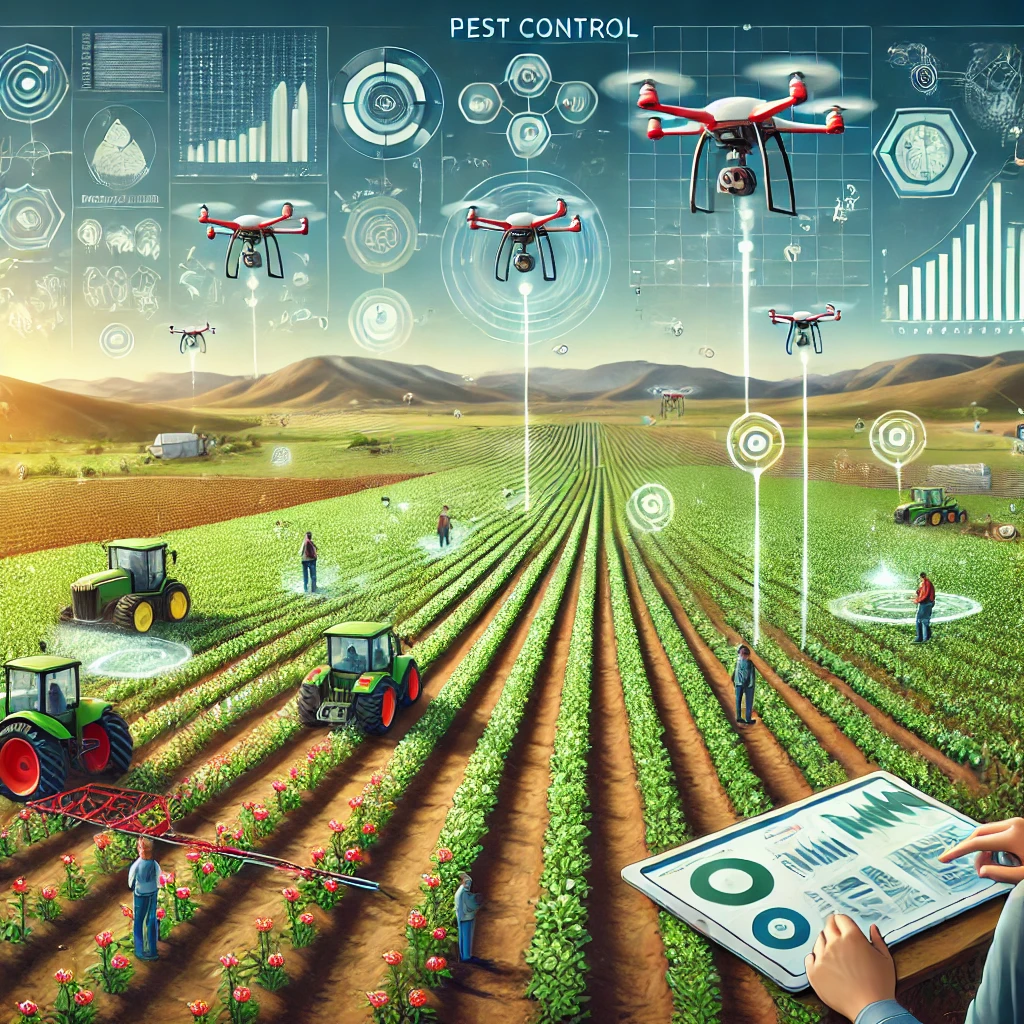Introduction to Precision Agriculture
Precision agriculture integrates advanced technologies to enhance farming efficiency and effectiveness. Recent trends in pest control through precision agriculture focus on leveraging data-driven approaches and technological innovations. This essay discusses how precision agriculture is revolutionizing pest control practices, highlighting key trends and their implications for modern farming.
Data-Driven Pest Monitoring
One of the main trends in precision agriculture is the use of data-driven pest monitoring. Technologies such as remote sensing, drones, and IoT sensors collect real-time data on crop conditions and pest populations. This information allows for precise identification of pest hotspots and tailored interventions. By analyzing data trends, farmers can predict pest outbreaks and implement targeted control measures.
Use of Drones for Pest Surveillance
Drones have become a valuable tool in precision agriculture for pest surveillance. Equipped with high-resolution cameras and sensors, drones provide detailed aerial views of crops, identifying pest infestations that may not be visible from the ground. This technology enables farmers to monitor large areas efficiently and apply treatments only where needed, minimizing pesticide use and environmental impact.
Integration of IoT Sensors
The integration of Internet of Things (IoT) sensors in precision agriculture enhances pest control by providing continuous monitoring of environmental conditions. Sensors track factors such as temperature, humidity, and soil moisture, which can influence pest activity. By correlating this data with pest population trends, farmers can adjust their pest management strategies in real time, improving overall effectiveness.
Application of Machine Learning and AI
Machine learning and artificial intelligence (AI) are increasingly applied to analyze pest data and predict outbreaks. AI algorithms process large datasets to identify patterns and trends in pest behavior. This predictive capability enables farmers to anticipate pest issues and implement preemptive measures. AI-driven insights lead to more accurate and efficient pest control strategies.
Adoption of Precision Pesticide Application
Precision pesticide application is a significant trend in modern pest control. Advanced equipment such as variable-rate sprayers adjusts pesticide application based on real-time data. This technology ensures that pesticides are applied only where necessary, reducing waste and minimizing environmental impact. Precision application improves the efficiency of pest control efforts and supports sustainable farming practices.

